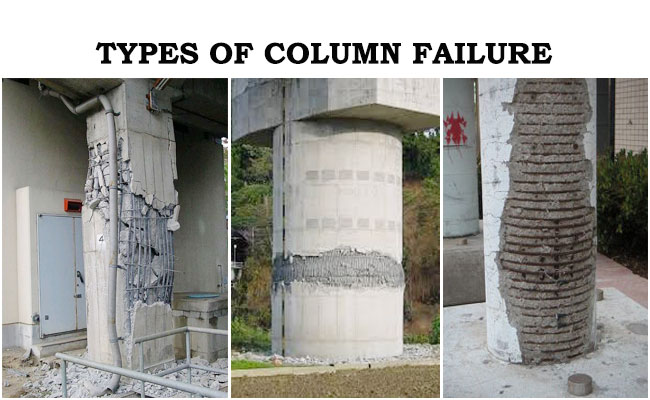Types of column failure

In this exclusive civil engineering article, you will know the reasons for column failure as well as the types of column failure.The main purpose of column is to transmit the load to the horizontal beam in vertical direction.
In modern buildings, different types of materials are utilized and these materials undergo both compression & tension stress. The design of the building is created based on these stresses. The columns are made of two vital materials like concrete and steel.
The engineers measure the entire stress resulting from the live and dead load of the whole building and start designing various internal elements of the building like foundation, beam, and columns. When the operative stress surpasses the permissible stress (computed), then the structure is likely to be collapsing.
Column failure is categorized as follow:-
The columns collapse in the following situations:-
- Compression failure
- Buckling
Compression Failure
If the columns are axially loaded, the concrete and steel will undergo some stresses. When the loads are higher in amount with regards to the cross-sectional area of the column, the concrete and steel will attain the yield stress and the collapsing will occur devoid of any later deformation. Under this type of failure, the material collapses itself, not the entire column. This type of collapse frequently found in shorter and wider columns. To get rid of it, the column should be constructed with adequate cross-sectional area in respect of permissible stress.
Buckling Failure
Buckling failure usually happens in long columns where columns dislocate laterally or horizontally since they are very lean and their minimum lateral dimension exceeds 12. Under such situation, the load bearing strength of the column is reduced significantly. The columns turn out to be unsteady and begin buckling to side ward even against small loads. It signifies that the concrete and steel attain their yield stress for even small loads and collapse because of lateral buckling. To resist this type of failure, the long columns should not be built up with slenderness ratio exceeding 30. So, it is important to recognize the type of failures happened whether it is resulting from the concrete utilized or the design errors.

